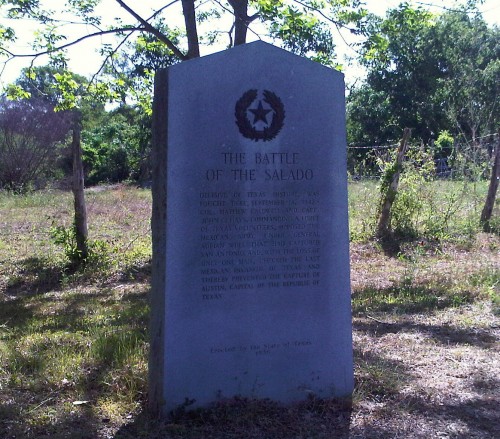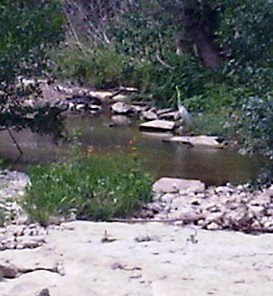Most people accept as conventional wisdom about the Texas frontier, that Anglo settlers were always the consummate horsemen, cowboys and cavalrymen that they were at the height of the cattle boom years. But that was not so: there was a learning curve involved. The wealthier Texas settlers who came from the Southern states of course valued fine horseflesh. Horse-races were always a popular amusement, and the more down-to-earth farmers and tradesmen who came to Texas used horses as draft animals. But the Anglo element was not accustomed to working cattle the long-horned and wilderness adapted descendents of Spanish cattle from horseback. Their eastern cattle were slow, tame and lumbering. Nor were many of them as accustomed to making war from the saddle as the Comanche were. Most of Sam Houston’s army who won victory at San Jacinto, were foot-soldiers: his scouts and cavalry was a comparatively small component of his force. It was a deliberate part of Sam Houston’s strategy to fall back into East Texas, where the lay of the land worked in the favor of his army. The Anglos’ preferred weapon in those early days in Texas the long Kentucky rifle, a muzzle-loading weapon, impossible to use effectively in the saddle, more suited to their preferred cover of woods not the rolling grasslands interspersed with occasional clumps of trees which afforded Mexican lancers such grand maneuvering room.
republic of Texas
Stand Off at the Salado
Like a great many locations of note to the tumultuous years of the Republic of Texas, the site of the battle of Salado Creek doesn’t look today much like it did in 1842 . . . however, it is not so much changed that it is hard to picture in the minds’ eye what it would have looked like then. The creek is dryer and seasonal, more dependant now upon rainfall than the massive amount of water drawn into the aquifer by the limestone sponge of the Hill Country, to the north. Then before the aquifer was tapped and drilled and drained in a thousand places the water came up in spectacular natural fountains in many places below the Balcones Escarpment. The Salado was a substantial landmark in the countryside north of San Antonio, a deep and regular torrent, running between steep banks lined with oak and pecan trees, thickly quilted with deep brush and the banks scored by shallow ravines that ran down to water-level. Otherwise, the countryside around was gently rolling grasslands, dotted with more stands of oak trees. There was a low hill a little east of the creek, with a house built on the heights. Perhaps it might have had a view of San Antonio de Bexar, seven miles away to the south and west.
The Great Texas Pig War of 1841
(Another in my historical trivia posts – this is a cross-post from my book-blog. The Pig War features in my latest book, Deep in the Heart … along with a lot of other relatively unknown mid-19th century trivia.)
The Pig War was not actually an honest-to-pete real shooting war. But it did involve a pair of international powers; the Republic of Texas, and the constitutional monarchy of France. And thereby hangs the story of a neighborhood squabble between a frontier innkeeper and a gentleman-dandy named Jean Pierre Isidore Dubois de Saligny who called himself the Comte de Saligny. He was the charge d’affaires, the representative of France to the Republic of Texas, arriving from a previous assignment the French Legation in Washington D.C. He had been instrumental in recommending that France extend diplomatic recognition to the Republic of Texas, but one might be forgiven for thinking that some kind of 19th Century Peter Principle was at play . . . for Dubois turned out to be terribly undiplomatic.

